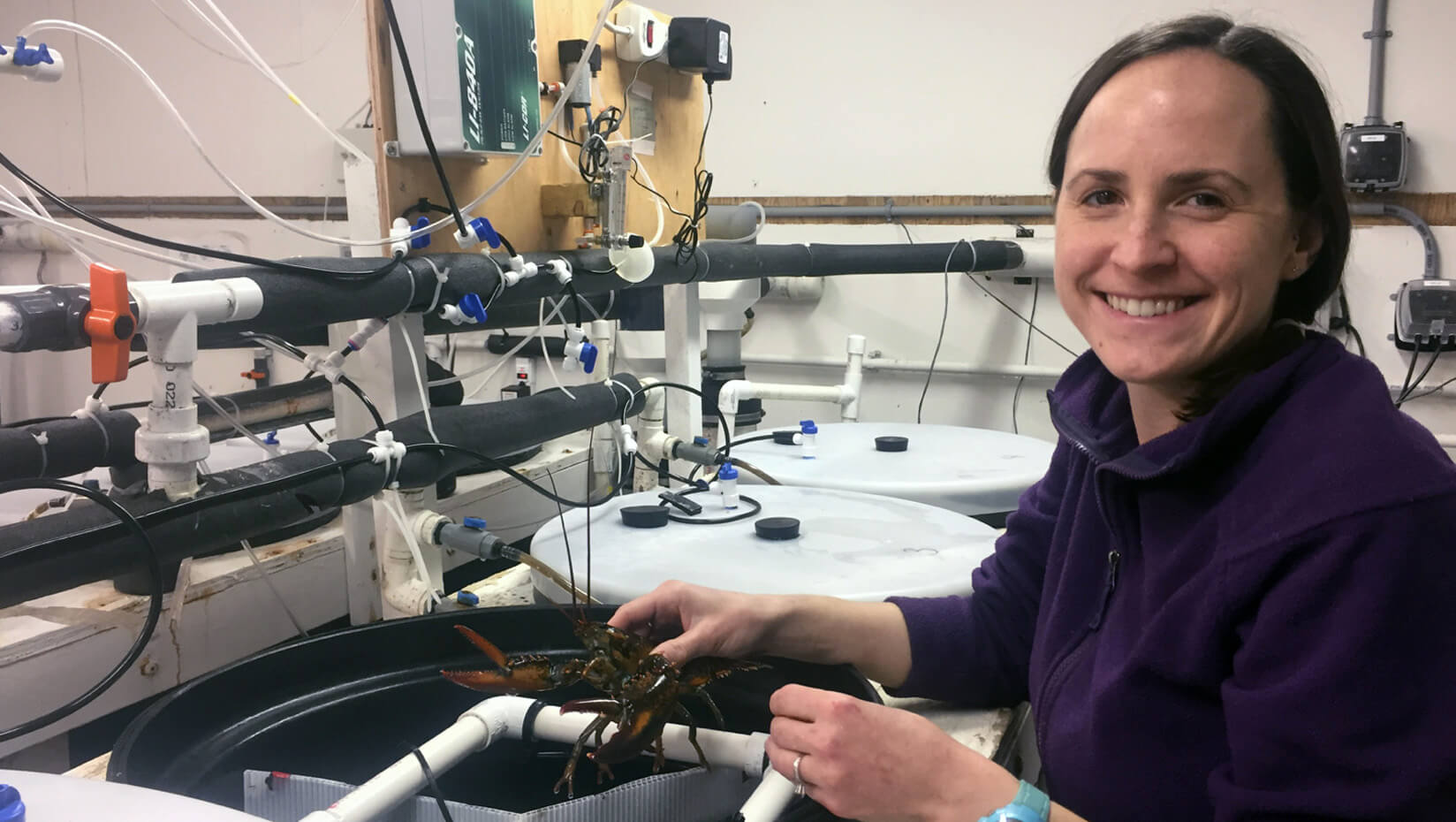
During abrupt warming, lobsters in acidic water have reduced heart function, fewer infection-fighting cells
Ocean acidification and warming may be an unhealthy combination for lobsters, say University of Maine scientists.
The heart rates of lobsters (Homarus americanus) who lived 60 days in water with predicted end-century ocean pH levels became erratic significantly sooner during an abrupt warming event than those of lobsters in ocean water with current pH levels.
The findings could be “likened to putting people on a treadmill and finding that people exposed to ocean acidification fell off the treadmill from exhaustion much sooner than those not exposed,” says Heather Hamlin, a reproductive endocrinologist and associate professor in the School of Marine Sciences.
The lobsters exposed to acidic ocean conditions also had fewer cells that fight infection in their hemolymph (similar to blood), says Amalia Harrington, a recent marine biology Ph.D. graduate.
So while lobsters in acidic ocean water may look and act normal, they experience physiological challenges when exposed to multiple stressors, says Hamlin.
She and Harrington tested adolescent female lobsters transitioning to adulthood. Effects of environmental stressors during this stage could have major impacts on the population of the species, say the researchers, who believe this is the first such study of its kind.
“We’re really trying to get at the ‘hidden’ impacts of climate change on this understudied but extremely important stage of the American lobster,” says Harrington.
“Most of the previous work exploring climate change impacts on American lobster has focused on early developmental stages (eggs and larvae). While this is helpful for understanding how environmental change might impact the number of baby lobsters that survive their time in the plankton and make it to the seafloor, it doesn’t really tell us what impact that will have on the population as a whole.”
Harrington says they also wanted to gain a better understanding of non-lethal impacts of acidification on lobsters.
The researchers’ findings are in the online article “Ocean acidification alters thermal cardiac performance, hemocyte abundance, and hemolymph chemistry in subadult American lobsters Homarus americanus H. Milne Edwards, 1837 (Decapoda: Malcostraca: Nephropidae)” in the April 8, 2019 issue of Journal of Crustacean Biology.
The level of carbon dioxide in the atmosphere already has resulted in widespread patterns of ocean acidification and more frequent extreme warming events, say Harrington and Hamlin.
In addition, the Gulf of Maine is warming faster than 99 percent of the global oceans. In summer 2012, its temperature hit a record 68.98 Fahrenheit and last summer, it reached 68.93, according to the Gulf of Maine Research Institute.
For the research, Harrington and Hamlin incrementally increased the water temperature from 53.6 Fahrenheit to 82.4 in 2 hours and 30 minutes in tanks with a control group of lobsters and in tanks with lobsters who had lived two months in ocean pH conditions of 8.0 or 7.6.
They found that lobsters exposed to decreased pH (more acidic water) demonstrated reduced cardiac performance.
The decline in total hemocyte counts (THCs) in the lobsters’ hemolymph could compound the issue, says Harrington. When immune function is suppressed, susceptibility to disease could increase.
She and Hamlin will explore that possibility with $192,000 from the National Oceanic and Atmospheric Association Saltonstall-Kennedy Grant Program. It funds projects that “address the needs of fishing communities, optimize economic benefits by building and maintaining sustainable fisheries, and increase other opportunities to keep working waterfronts viable.”
Harrington will work as a postdoctoral researcher in Hamlin’s lab. They’ll expose lobsters to a pathogen to examine if lobsters previously subjected to acidic water are more vulnerable.
“Exposing the lobster to a pathogen will help us determine how the lobsters respond to a subsequent stress event, and if they have the capacity to deal with it in the same way lobsters that haven’t been exposed to acidic conditions can,” says Hamlin.
”Similar to when humans become run down, they’re more vulnerable to catching a cold or other illness.”
Additional follow-up research could explore the combined effects of ocean acidification and warming on lobster physiology, and how those physiological changes relate to behavior, reproduction and gene expression.
Contact: Beth Staples, 207.581.3777
